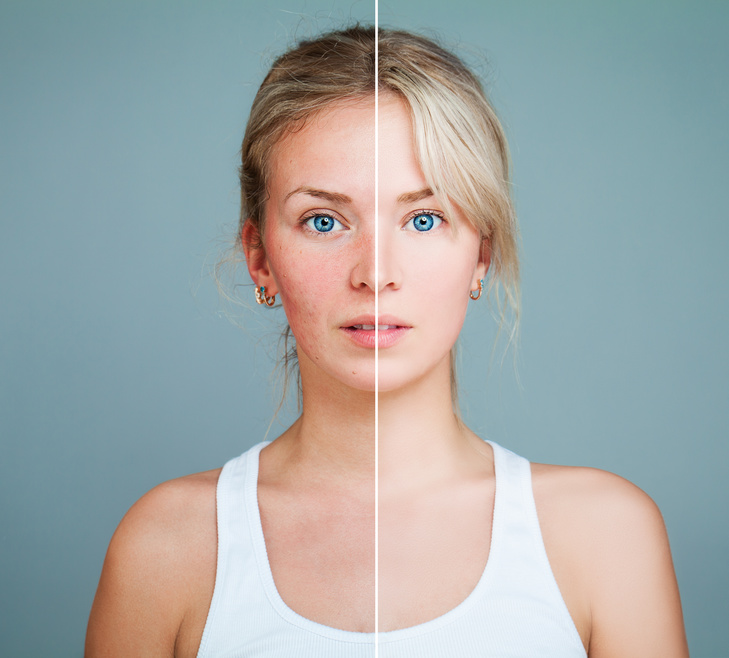Rosacea is a chronic, inflammatory skin condition that primarily affects the face. It can cause facial redness and small bumps. It’s usually found in the cheeks, chin, forehead, and nose. It is often mistaken for acne, eczema, or some other medical dermatology condition.
The four subtypes of rosacea include:
- Erythematotelangiectatic rosacea: This subtype is often called facial redness by dermatologists. You will notice flushing and chronic redness of your face. Small blood vessels could be visible, and you might experience symptoms like burning, swelling, or scaling.
- Papulopustular rosacea: For this subtype, you will notice bumps and pimples on your face. This differs from acne because this rosacea subtype comes with raised red patches known as plaque.
- Phymatous rosacea: The third subtype is often associated with an enlarged nose. This happens because you will have excess tissue on the skin, known as rhinophyma. It’s associated with thickening skin and irregular surface nodules. Sometimes, this subtype can extend outside of the nose area in rare cases.
- Ocular rosacea: This last subtype of rosacea is known to affect the eyes. It could result in a watery appearance, burning and stinging sensations, and irritation. You might also experience swollen eyelids and styes.
- Excessive dryness: Moderate to severe rosacea breakouts tend to leave your skin stressed, inflamed, and susceptible to external irritants. The protective barrier is compromised as well, leaving your skin sensitive to harsh outside pollutants, dry air, and soaps.
- Facial redness: Redness in the cheeks, forehead, chin, and nose are classic early signs of rosacea.
- Visible blood vessels: If you notice tiny blood vessels on your face, you might have rosacea.
- Eye discomfort: Watery, irritated eyes, puffy eyes, or frequent styes are all symptoms of rosacea.
The causes of rosacea are unknown. There are some factors thought to have an influence on its development, like family history, H.pylori bacteria, and light skin color. This skin condition can be aggravated by things like spicy foods, humidity, hot foods and drinks, caffeine, and corticosteroids.
Here are some common signs and symptoms of rosacea to look out for:
From 2016 to 2026, the employment of skin care specialists is projected to grow by roughly 14%, which is faster than the average for all other occupations. If you notice any of these common signs and symptoms of rosacea, contact your dermatologist or call a dermatology center today.

